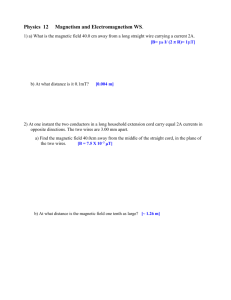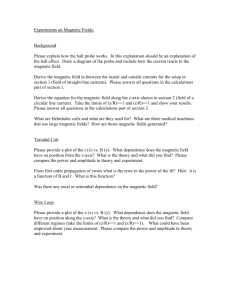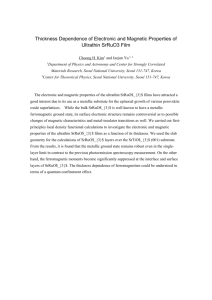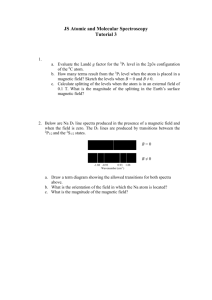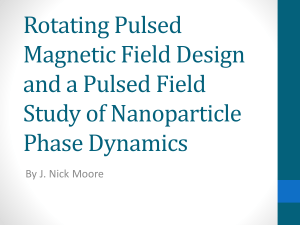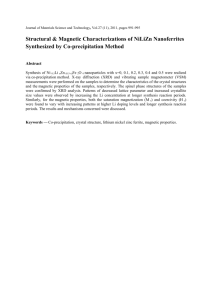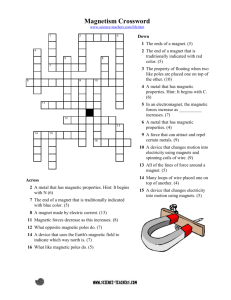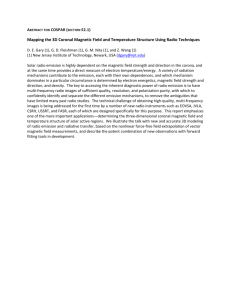セミナーのご案内 Seminar Fri., October 4, 2013
advertisement
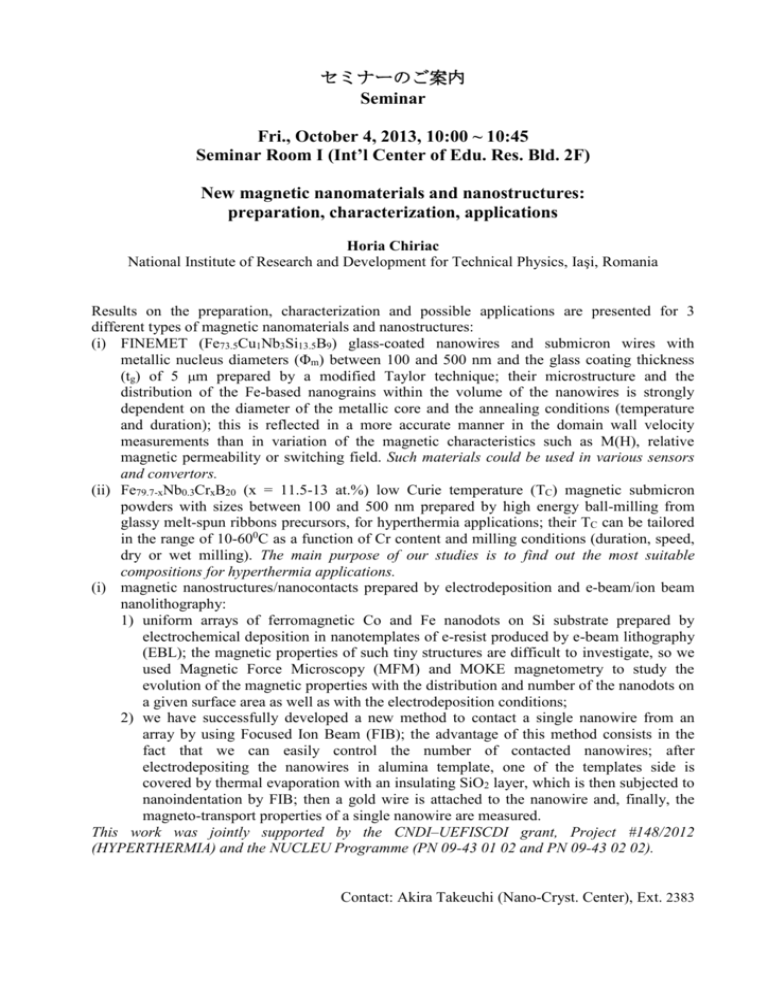
セミナーのご案内 Seminar Fri., October 4, 2013, 10:00 ~ 10:45 Seminar Room I (Int’l Center of Edu. Res. Bld. 2F) New magnetic nanomaterials and nanostructures: preparation, characterization, applications Horia Chiriac National Institute of Research and Development for Technical Physics, Iaşi, Romania Results on the preparation, characterization and possible applications are presented for 3 different types of magnetic nanomaterials and nanostructures: (i) FINEMET (Fe73.5Cu1Nb3Si13.5B9) glass-coated nanowires and submicron wires with metallic nucleus diameters (Φm) between 100 and 500 nm and the glass coating thickness (tg) of 5 m prepared by a modified Taylor technique; their microstructure and the distribution of the Fe-based nanograins within the volume of the nanowires is strongly dependent on the diameter of the metallic core and the annealing conditions (temperature and duration); this is reflected in a more accurate manner in the domain wall velocity measurements than in variation of the magnetic characteristics such as M(H), relative magnetic permeability or switching field. Such materials could be used in various sensors and convertors. (ii) Fe79.7-xNb0.3CrxB20 (x = 11.5-13 at.%) low Curie temperature (TC) magnetic submicron powders with sizes between 100 and 500 nm prepared by high energy ball-milling from glassy melt-spun ribbons precursors, for hyperthermia applications; their TC can be tailored in the range of 10-600C as a function of Cr content and milling conditions (duration, speed, dry or wet milling). The main purpose of our studies is to find out the most suitable compositions for hyperthermia applications. (i) magnetic nanostructures/nanocontacts prepared by electrodeposition and e-beam/ion beam nanolithography: 1) uniform arrays of ferromagnetic Co and Fe nanodots on Si substrate prepared by electrochemical deposition in nanotemplates of e-resist produced by e-beam lithography (EBL); the magnetic properties of such tiny structures are difficult to investigate, so we used Magnetic Force Microscopy (MFM) and MOKE magnetometry to study the evolution of the magnetic properties with the distribution and number of the nanodots on a given surface area as well as with the electrodeposition conditions; 2) we have successfully developed a new method to contact a single nanowire from an array by using Focused Ion Beam (FIB); the advantage of this method consists in the fact that we can easily control the number of contacted nanowires; after electrodepositing the nanowires in alumina template, one of the templates side is covered by thermal evaporation with an insulating SiO2 layer, which is then subjected to nanoindentation by FIB; then a gold wire is attached to the nanowire and, finally, the magneto-transport properties of a single nanowire are measured. This work was jointly supported by the CNDI–UEFISCDI grant, Project #148/2012 (HYPERTHERMIA) and the NUCLEU Programme (PN 09-43 01 02 and PN 09-43 02 02). Contact: Akira Takeuchi (Nano-Cryst. Center), Ext. 2383 セミナーのご案内 Seminar Fri., October 4, 2013, 10:45 ~ 11:30 Seminar Room I (Int’l Center of Edu. Res. Bld. 2F) Microstructure and magnetic properties of Fe-Si-B-P-Cu submicron wires with Mn addition Nicoleta Lupu National Institute of Research and Development for Technical Physics, Iaşi, Romania The soft magnetic nanocrystalline materials are playing an increasing role in specific applications, namely energy efficient magnetic devices, power electronics, electrically powered vehicles and nuclear reactors. Miniaturization of such devices is becoming an important issue for many specific applications. Results on the preparation of Fe85-xMnxSi2B8P4Cu1 (x = 0; 1; 3 at.%) glass-coated submicron wires with metallic nucleus diameters (Φm) between 600 nm and 1.2 µm and the glass coating thickness (tg) of 4÷5 µm, with the aim to study the dependence of their magnetic properties on the diameter of the metallic core and structural changes induced by annealing at different temperatures (Ta) ranging between 250 and 5500C for 30 min. are reported. All samples are magnetically bistable, irrespective of dimensions and structure. However, the coercive and switching fields are decreasing significantly for the glass-coated submicron wires with additions of Mn. The larger the Mn content the smaller the coercive and switching fields are. The bistability is preserved even for the annealed samples at temperatures ranging from 2500C to 5500C for 30 min., which is a characteristic of the uniaxially magnetized materials, and indicates the formation of a central magnetic domain in the amorphous state. However, the submicron wires annealed below 4250C are much softer (the coercive field is decreasing), whilst after annealing above 4250C the coercivity increases significantly as the results of the increase of the grains size over the critical limit. Additionally, for the same total diameter, the smaller the diameter of the metallic core the larger the coercive field is. The measurement of the domain wall velocity (velocities of over 1500 m/s are obtained for optimum nanocrystalline structures) offers a more accurate image over the microstructure developed in glass-coated submicron wires than the conventional magnetic measurements (permeability and switching field) as previously demonstrated [1] and the results will be discussed in connection with the conventional magnetic properties. This work was jointly supported by the Advanced Research Center of Metallic Glasses, IMR, Tohoku University and the Romanian NUCLEU Programme (Project PN 09-43 01 02). [1] H. Chiriac, S. Corodeanu, T.-A. Óvári, N. Lupu, J. Appl. Phys. 113 (2013) 17A329. Contact: Akira Takeuchi (Nano-Cryst. Center), Ext. 2383
